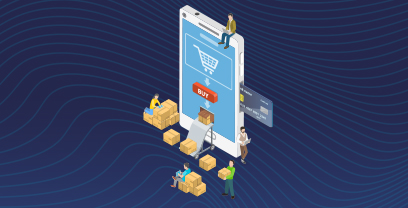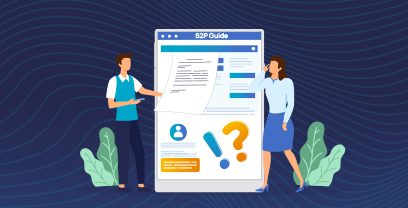Spend analysis is a process used by organizations to understand and manage their spending effectively. It involves collecting and analyzing expenditure data to identify cost-saving opportunities, improve efficiency and enhance compliance with purchasing policies.
Advanced technologies such as generative AI and modern procurement platforms with unified data models help to automate and refine the spend analysis process, enabling more accurate, real-time insights and facilitating smarter decision making with data-driven procurement strategies.
In this blog, we’ll take a deep dive into spend analysis, including its purpose and key benefits, how it’s used in procurement, the difference between direct and indirect spend, and the various types of spend analysis.
We’ll also explore key steps for analyzing spend, metrics and KPIs to track, and how you can enhance your procurement process with spend analysis software.
Firstly, What is Spend Analysis?
Spend analysis in procurement is a systematic process involving the collection, cleansing, classification and analysis of expenditure data, to gain insights into an organization’s spending patterns. Specifically, it entails aggregating data from various sources such as ERP systems, procurement software and financial systems, followed by cleansing to remove inaccuracies and inconsistencies.
Spend analysis data is classified into categories based on products, services and suppliers using techniques such as industry-standard coding systems. Companies often use advanced analytical tools or procurement data analytics software to scrutinize this categorized data, identifying trends and variances, and finding areas for improvement.
This process not only helps with strategic decision-making for procurement; it also enhances financial planning and compliance monitoring. Companies can leverage spend analytics to transform raw spending data into actionable business intelligence.
Why Is Spend Analysis Important?
Spend analysis helps organizations gain insights into their spending patterns by providing a comprehensive view of where and how their financial resources are being allocated. This process involves aggregating and examining expense data from various sources – invoices, purchase orders and supplier contracts for example.
Organizations can then categorize and scrutinize spending across different departments and suppliers. By gaining visibility into spending patterns, they can more easily identify inefficiencies such as maverick spending – where purchases are made outside of agreed contracts – or non-compliant spending.
Spend analysis is also useful for uncovering cost-saving opportunities, such as frequent small-volume purchases that could be consolidated or contracts with unfavorable terms that can be re-negotiated. They can compare spending against industry benchmarks and historical data, as well. By understanding these patterns, organizations can work to eliminate unnecessary expenditures.
Spend analysis supports informed decision-making and helps guide procurement strategies with data-driven insights into spending patterns and trends. Organizations can use this information for budget planning and for setting realistic, achievable cost-saving targets. As a result, overall efficiency and compliance improves, as does the effectiveness of the organization’s procurement function.
Combining Spend Analysis and Spend Analytics for Procurement Management
Spend analysis is the foundation for creating a clear and accurate picture of past and current spending patterns. Once the spend data is organized and understood through spend analysis, advanced analytical tools and techniques can be applied to examine the processed data. This is spend analytics, which focuses on interpreting the data to uncover deeper insights, trends and opportunities.
By analyzing spending patterns and supplier data, organizations can find areas to negotiate better deals, consolidate purchases for volume discounts or switch to more cost-effective suppliers. Spend analytics also helps in evaluating supplier performance, compliance and risk.
Types of Spend Analysis
Spend analysis helps with strategic sourcing by providing insights into supplier performance and spending trends. It improves budgeting and forecasting accuracy, helps to foster effective supplier relationships and plays a pivotal role in reducing costs, mitigating risks and contributing to the overall financial health of an organization.
Procurement Spend analysis can be categorized into three main types based on the focus of the analysis:
- Supplier Spend Analysis: This type focuses on analyzing expenditures with each supplier as well as terms and conditions, and the supplier’s performance and compliance. This helps organizations identify dependencies on certain suppliers, evaluate supplier risk, negotiate better terms and consolidate the supplier base for better pricing and efficiency.
- Category Spend Analysis: This type segments spend into different categories based on the type of product or service, i.e. IT services, marketing, professional services, raw materials, etc. Category spend analysis helps organizations understand resource allocation – a critical insight for identifying spending opportunities that align with strategic business priorities.
- Contract Spend Analysis: By evaluating how much is being spent under each contract, the terms of these contracts and the performance against those terms, organizations can ensure they are realizing the expected value from their contracts. What’s more, they can identify contract leakages, which can be a significant source of inefficiency and increased costs.
What Are the Steps in the Spend Analysis Process?
Conducting a spend analysis involves a detailed and systematic process. Here’s a step-by-step outline you can follow to conduct a spend analysis:
- Data Collection: Collect expenditure data from various sources within the organization, such as ERP systems, financial systems, procurement software and credit card statements.
- Data Cleansing: Cleanse the data to ensure accuracy and consistency by removing duplicates, correcting errors and filling in missing values. Be sure to standardize the data format to make cleaning easier.
- Data Classification: Categorize the spending data into meaningful groups. This can be based on the type of product or service, department, business unit or supplier. Use standard classification frameworks such as the United Nations Standard Products and Services Code (UNSPSC) or custom categories relevant to your organization.
- Data Consolidation: Aggregate the cleansed and classified data, especially if your organization operates in multiple locations or has various subsidiaries. Ensure that all data is consolidated into a single, centralized system for uniform analysis.
- Data Analysis: Analyze the consolidated data to identify spending patterns, trends and anomalies, and look for cost savings opportunities.
- Supplier Analysis: Evaluate supplier performance and spend per supplier. You should also identify strategic suppliers and assess risks associated with supplier concentration during this step.
- Category Analysis: Assess spend by category to understand where the bulk of the expenditure is going, and identify categories with potential for cost reduction or process improvement.
- Contract Analysis: Review spending against contracts to ensure compliance and identify any off-contract spending. Also evaluate contract terms and conditions for renegotiation opportunities during this step.
- Benchmarking: Compare your spending data with industry standards or similar organizations to identify best practices and areas for improvement.
- Create an action plan: Develop comprehensive reports and dashboards to present the findings, and prioritize areas with the highest potential for cost savings or efficiency improvements.
Important Spend Analysis KPIs and Metrics
Key Performance Indicators (KPIs) in procurement can be categorized into five groups, each of which focuses on different aspects of procurement to ensure efficiency and effectiveness (see the Table below).
These KPIs help to monitor and optimize various aspects of the procurement process, ensuring that procurement contributes effectively to organizational goals, particularly in terms of cost savings and operational efficiency.
| Cost Savings | |
| Total Cost Savings | Reduction in costs achieved through procurement activities compared to previous periods. |
| Cost Avoidance | Expenses that were anticipated but avoided due to procurement strategies. |
| Return on Investment (ROI) for Procurement | Financial return gained from procurement investments. |
| Spend Under Management | |
| Percentage of Spend Under Management | Proportion of total organizational spend that is controlled or influenced by the procurement department. |
| Spend Compliance Rate | Adherence to preferred suppliers and contracts. |
| Supplier Performance | |
| Supplier On-Time Delivery Rate | Percentage of orders delivered on time by suppliers. |
| Supplier Quality Rate | Quality of goods or services received from suppliers. |
| Supplier Risk Management | Effectiveness of identifying and managing risks associated with suppliers. |
| Operational KPIs | |
| Procurement Cycle Time | Time taken to complete the procurement process from requisition to purchase. |
| Purchase Order Accuracy | Accuracy of purchase orders in terms of specifications, pricing, and quantities. |
| Cost Per Invoice and Order | Efficiency of the procurement process by measuring the administrative cost per order or invoice. |
| Employee KPIs | |
| Employee Productivity | Output of procurement staff, often in terms of cost savings achieved or the number of transactions processed. |
| Training and Development | Investment in and effectiveness of training programs for procurement staff. |
| Employee Satisfaction | Job satisfaction and engagement levels of procurement staff, which can impact their performance and retention. |
Benefits and Advantages of Spend Analysis
Spend analysis offers several key benefits that help organizations streamline their procurement processes and improve financial efficiency:
Reduce Maverick Spending
Spend analysis helps identify such non-compliant spending by highlighting discrepancies between actual purchasing behavior and established procurement policies. By pinpointing areas where such maverick spending occurs, organizations can implement tighter controls, reinforce compliance with preferred suppliers and contracts and, ultimately, reduce unnecessary costs.
Optimize the Supplier Base
Spend analysis provides insights into the supplier landscape, helping to discover areas of overlap, underperformance or redundancy within your supply base. In this way, companies can achieve better pricing through consolidated purchasing, reduce management complexity and foster stronger, more strategic relationships with key suppliers.
Free Up Working Capital
Through spend analysis, organizations can identify opportunities to optimize inventory levels and negotiate better payment terms with suppliers, releasing cash that would otherwise be tied up and improving the organization’s liquidity. This helps companies be agile and respond to market changes and investment opportunities.
Minimize Supply Chain Disturbances
A resilient supply chain is essential to ensure uninterrupted business operations. By analyzing spending patterns, companies can identify critical suppliers and potential risks, such as over-dependence on a single supplier or geographic region. Armed with this information, they can develop strategies to diversify their supplier base and establish contingency plans, reducing the risk of supply chain disturbances.
How to Enhance Your Procurement Process with Spend Analysis Software
A critical best practice is robust data governance, which involves establishing clear policies and procedures for data collection, cleansing and management, ensuring that the data used in the analysis is accurate, complete and up-to-date.
Effective data governance requires dedicated resources and tools, such as specialized spend analysis tools that can integrate data from multiple sources. It’s also crucial to involve key stakeholders from various departments, such as procurement, finance and operations from the beginning. This collaborative approach ensures that the data and insights gained are relevant and actionable across the organization.

Organizations should foster a culture of continuous improvement in their spend analysis process by conducting regular reviews and working to update the process to adapt to changing business needs.
They should also stay abreast of any advancements in analytical tools and techniques and provide regular training and development for staff. Finally, organizations should regularly benchmark their spend analysis process and outcomes against industry standards or peers to identify areas for improvement.
Conclusion
Spend analysis is an indispensable tool for organizations aiming to optimize their procurement strategies and achieve significant cost savings. By providing crucial insights into spending patterns, it helps to identify inefficiencies and maverick spending, and save organizations money and valuable resources.
Through spend analysis software, organizations can consolidate their supplier base, negotiate better terms and streamline procurement processes and take a data-driven approach to managing supplier relationships and enhancing supply chain resilience.
Check out this Spend Analysis Datasheet to understand your spend & uncover new cost-saving opportunities.






